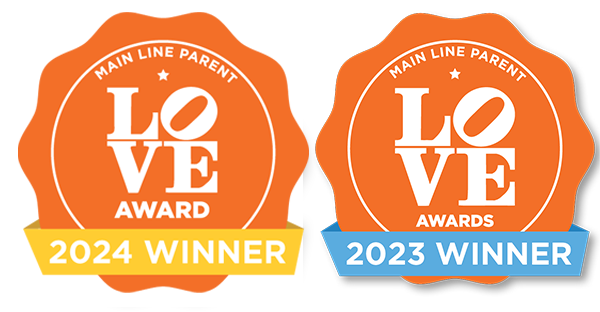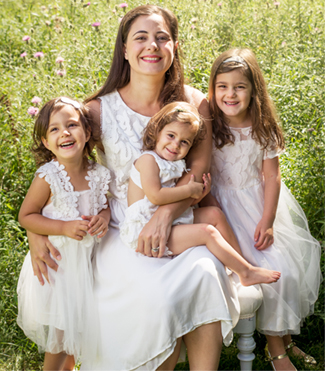If you have stuck with me so far, you must be wondering what is needed to get started. It may be a bit overwhelming initially, but once you have your gear, you’ll be set. My goal here is to make it not feel so overwhelming, so my information will not be fully inclusive, but instead will focus on more common options.
Here are the 6 things you will need to get started with cloth diapering:
1. Style of Diapers
There are a number of options when it comes to cloth diapers.
- All-in-One options (AiO) which are similar to disposable diapers. They have everything needed contained in one simple package. However, they take longer to dry.
- Pocket diapers are a water resistant shell with a soft fabric pocket in which you stuff an absorbent insert. Inserts vary by length, thickness, absorbancy and material depending on brand. When soiled, the whole diaper goes in the wash. These are easy to use for family members who are not experienced with cloth diapering because they can be pre-stuffed.
- All-in-Two (Ai2) diapers are similar to pocket diapers only they lack the pocket. They are also waterproof and can be wiped out between inserts. This can make a more economical option for those who wish to invest in less covers.
- There are also flats and pre-folds which are paired with covers. Hey, I’m going to be honest, I love pre-folds for burping. However, I don’t often use them for diapering.
So the next question is how many? Which can be answered with another question: How often do you want to do laundry?
An average newborn will need to be changed approximately 12 times per day. It is often recommended to start with 15-24 diapers. This does not leave a lot of leeway in terms of time between washes. However, if you are on a tight budget, as I was, you can definitely make do with this amount. I started with 18- 3 of which were All-in-Twos. This allowed me to simply wipe the plastic liner and replace with a clean inert when the diaper was only wet. I had to do laundry every day, but I didn’t mind because it’s not as if I’m washing them by hand anyway. More diapers = laundry less often.
Extra inserts are always handy. In a pinch I even use my pre-folds for my two year old. It’s nice when things in your house can multi-task.
You will likely find that your collection, or stash, of cloth diapers grows over time. It just happens.
2. Good detergent
I just discovered H2O At Home which allows you to use chemical free cleaning products. They have a laundry ball which cleans without detergent. I have to say, it does a good job on the diapers and I don’t have to worry about soap buildup. Ask me in the comments below how it is going and I’ll let you know if I still feel the same way down the road.
Fluffloveuniversity.com has a great resource with a detergent index if you want to compare the quality of your current detergent.
This site is an amazing resource when you are ready to really dive in to the hardcore world of cloth diapers. I found it overwhelming until after I started cloth diapering. Now, I’m able to use it to answer specific questions as I move along in the process.
3. Something to contain the dirty ones
Lots of people use diaper pails to store dirty diapers. I’m personally not a fan because I think they stink- but it is an option for sure. I’ve been told a drop of tea tree oil helps cut the odor. I use wet bags. The nice things is, it limits how many dirty diapers can hang around the house. If the bag is full, a load must be done. Plus the bag hangs nicely on the back of my laundry room door so it is out of the way and up off the floor. We don’t have a problem with it becoming too stinky or sitting around too long. AND the kids can’t reach it.
DON’T store your diapers in a wet pail. It poses a health hazard since bacteria thrives in wet places and it creates a drowning risk. It’s just not worth it!
We have two wet bags. I keep one small one upstairs and a larger one downstairs.
The smaller one can be emptied into the washer and taken along on outings if I’m compelled to bring a wet bag with me.
4. Somewhere to dry the clean ones
Inserts can go into the dryer without too much concern and it helps to soften the fibers after washing. The covers should be given more care and should avoid the dryer as much as possible. Most covers will dry within a few hours of being set out on a drying rack. I tend to put mine out overnight. This is always with the intention of putting them away in the morning- but I have three kids- so I often just end up pulling covers from the drying rack until they are gone.
5. A diaper sprayer
Okay this one is debatable. Some insist it is an absolute must have. Others don’t share the feeling. When your baby is eating solid food, they will produce more solid poop. You dump the solid waste in the toilet. What is left on the diaper is by far more odoriferous than milk poop so most people like to rinse the diapers before adding to their pail or wet bag. You can buy the sprayers which are specially designed to connect to your toilet or you can buy a standard kitchen sink sprayer far cheaper. If you are on a budget you will find it functions the same, but saves you money. It just doesn’t have the nifty attachment to hold it in place. 3M Command makes great products for the clever cloth diapering family.
6. A Baby!
Okay- a baby, toddler or small child.



